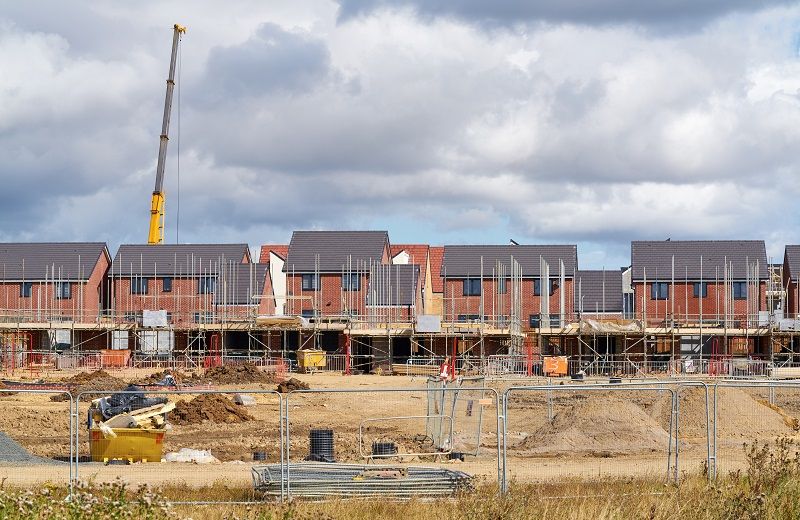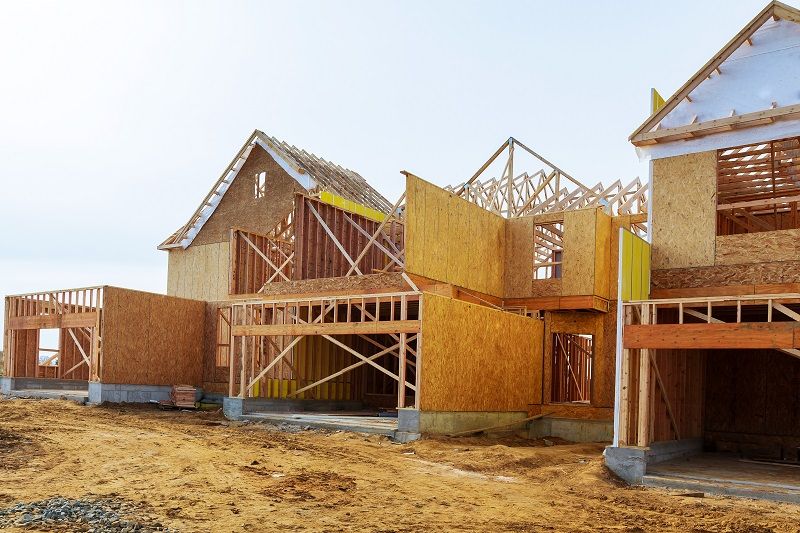By Kathryn Hickok
This month, Cascade Policy Institute is releasing a new report explaining why government-mandated “affordable housing” doesn’t actually make housing more affordable.
In The Affordable Housing Scam, author Randal O’Toole writes that while “U.S. taxpayers spend tens of billions of dollars a year subsidizing housing for low-income households,” those units cost “about 20 percent more per square foot than unsubsidized homes.” Developers, not low-income households, capture most of the benefits of taxpayer-funded subsidies. O’Toole recommends that “[i]nstead of wasting money on high-cost housing, project-based affordable housing funds should be abandoned in favor of tenant-based voucher subsidies.”
Most families want to live in single-family homes, not apartments or small attached units. Yet, state and local government planners impose growth policies on their constituents that restrict supply of what their communities really want. The supply of land available for new homes is artificially constrained by urban growth boundaries, which drive up the costs both of existing housing and new construction within UGBs.
Oregon can bring down housing costs at all price points by increasing the supply of land available for new homes. In a state that is 98% open space, building neighborhoods that people want to live in should not be a problem.
Kathryn Hickok is Executive Vice President at Cascade Policy Institute, Oregon’s free market public policy research organization, and Director of Cascade’s Children’s Scholarship Fund-Oregon program.













Terry Cook
The UGB is certainly one restraint to affordable housing in Oregon’s vaunted “Smart Development” quiver, which by the way has never been replicated in any other state since its grand rollout as the nirvana of planning in 1972. But it’s not just the UGB that drives housing costs. In fact, it may be little more than a brilliant way for insiders to enrich themselves with government help. Government seems to be good at putting their fingers on the scale doesn’t it?
As a developer of “affordable rental housing” since 1990 in Oregon, I’ve witnessed significant changes in the State’s tax credit funded housing programs. A series of events all coincided over a 20+ year period that drove costs for affordable apartments up from about $88,000/unit in 2000 to over $315,000 in 2023.
* In the late 90’s, Housing and Community Services (HCS) voted for SEIU union representation adding employees and costs to what was at the time a lean, efficient open shop government operation;
* The federal Housing Tax Credit (HTC) program morphed from annually re-allocated funding to a permanent, codified and funded program and simultaneously baked in cost escalations, demand for subsidies and increased dependency on tax revenues;
* HCS adopted construction and finance related mandates annually for proposed affordable housing projects which raised costs and corresponding demand for public funding;
* HCS advanced rules disfavoring the private developer and strongly promoting non-profits in housing applications ostensibly to insure affordability but which in turn simply drove costs up. Most of the housing construction work at that time was being done by small contractors providing some buffer from the vastly higher cost structure of the major construction firms e.g. Hoffman, Walsh, R&H to name but a few;
* Without a non-profit in tow with whom to “share the wealth” (development fees and ownership), a private developer could not score high enough to win an award of tax credit funding which further exacerbated the rising cost issue;
*Increased hard and soft construction costs drove the need for ever greater subsidies to deliver rental housing that fit within defined ranges of “affordability”. Competition for those funds therefore also rose sharply allowing HCS to further expand both construction and application requirements to win funding approval;
*With increasing demand for tax credit help from HCS, the department was able to leverage that into obtaining additional products and services from applicants, irrespective of additional costs;
* By the time of the great recession of 2007-2009, most of the small and independent developers had been washed out leaving only the big, unionized general contractors to do the work. With cost structures significantly greater than that of open shop contractors, costs skyrocketed.
*Per HCS, the 2023 tax credit program funded the construction of 836 “affordable apartments” with a total cost of $264,077,776 or $315,882 per unit.
While this is not a comprehensive story of affording housing development in the State it does point out that while the UGB is not an insignificant restraint on affordability, it is by no means the only, nor possibly even the greatest contributor to the skyrocketing cost of housing in Oregon in 2024.
As Ronald Reagan said “The closest thing to eternal life on earth is a government program.” An eternal government program that only knows how to raise the cost of things is one that needs to RIP before only miserable memories remain.
Richard Fink
Where is the data that supports the narrative in this article and the following one that more land equates to lower housing cost? According to Wikipedia, only two other states have similar UGB to Oregon, and they are WA and TN. WA has an average home price of $588,996 and OR is $497,249 (The Ascent, a Motely Services 5/2/2024) with a homeless rate per 10,000 of 35.88 and 47.58 respectively per a report by HUD. CA median home price is $782,695 (according to USA today of 5/23/2024 the new CA price is now over $900,000). CA Homeless rate is 46.55.
A study published in the Journal of American Planning Association 2006, stated “analysis has found that the UGB (in Oregon) has no effect on prices when other variables are taken into account.
Since the UGB was established in 1980, the UGB has been expanded 30 times. (Wikipedia).
The Capital Press, in a recent article stated that Bend has expanded its UGB twice in the past few years and NOTHING has been done with the land. The reason as stated in the article was the city didn’t have the money to provide services, sewer, water, etc. to support more housing.
Do these authors think that a developer is going to absorb the cost of installing these services, I think not.
My opinion is the UGB is not the problem. As stated earlier it has been expanded 30 times since its inception. I think a better solution is to revive the thinking of former Governor Tom McCall who went against the popular culture at the time, by promoting ‘come, but don’t stay’, open beach access to all, the Oregon bottle bill, reiterating that Oregon is a special place not to be destroyed.
Yes, the American Dream is a single home with a white picket fence, but it the most salient part of the American Dream is we are the land of opportunity. An individual is not pre-ordinated by an artificial class structure, but by his/her intelligence, motivation, self-reliance and hard work to meet their dreams.
I think a better way to attack the homeless situation is to determine the demographics of this population. We seem to do this with every other segment of our society. (Diversity, Inclusion, race, etc.). What percentage are homeless individuals, because they can’t afford the rent, got laid off, lack transportation to get to employment? How many are suffering a form of mental illness? Addiction issues? Other challenges? A single-family home with a white picket fence isn’t going to solve these challenges.